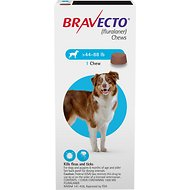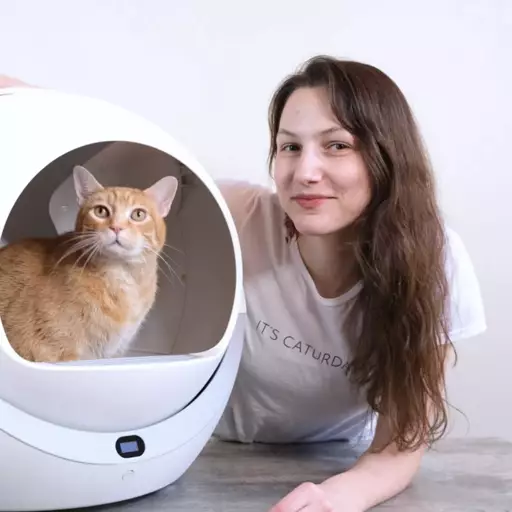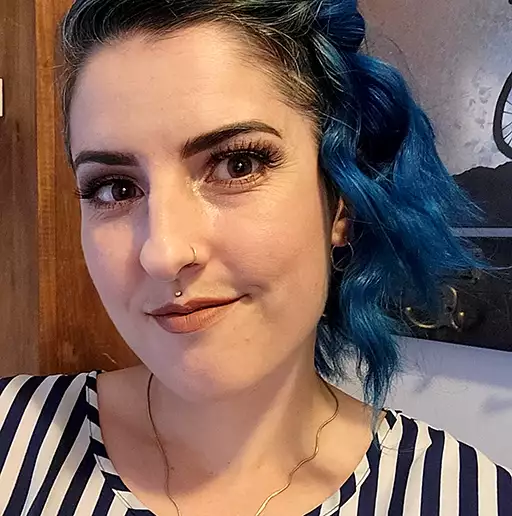Bravecto vs NexGard for Dogs: Our 2025 Guide To Which One Is Better
Quick Guide
- Key Differences Between Bravecto and NexGard
- What Is Better For Dogs: Bravecto Or NexGard?
- Conclusion – Both Drugs Are Relatively Safe
- 5 Key Features Of Bravecto
- 5 Key Features Of NexGard
- Our Nexgard vs Bravecto 2025 Comparison
- Price Differences Of Bravecto And NexGard: Winner – NexGard
- Availability – Tie Between NexGard And Bravecto
- Effectiveness – Bravecto is the Winner
- Ease of Application – Bravecto is the Winner
- For Flea Treatment Which One Is Better? NexGard or Bravecto?
- For Tick Treatment Which One Is Better? NexGard or Bravecto?
- Overall Winner Between Bravecto and NexGard – Our Pick Is Bravecto!
- Make Sure To Inspect Your Dog For Ticks Regularly And Remove Them!
- Choose The Right Flea And Tick Treatment For Your Dog – Follow This Guide!
One of the most important things you can do for your dog’s health – and your own – is to make sure that it is free from harmful ticks and fleas.
Ticks can carry pathogens which cause serious illnesses like Lyme Disease and Rocky Mountain Spotted Fever, which can put both you and your family at risk. The same is true of fleas, which can quickly breed in your home and potentially carry dangerous bacteria.
Because of this, all dogs need to have regular tick and flea treatments which help kill these pests and keep them from spreading. Two of the most common, vet-recommended treatments are Bravecto and NexGard. While they are quite similar, you may be wondering: What is better? Bravecto vs. NexGard?
In this article, we’ll take a deep look at each one of these anti-flea and anti-tick medications, and ensure that you choose the right on for your pup. Learn more about Bravecto vs. NexGard below!
Key Differences Between Bravecto and NexGard
The basic idea behind both Bravecto and NexGard is the same. These treatments prevent tick and flea infestation by killing the parasites and their eggs using a specialized drug, which becomes suffused throughout your dog’s skin and coat. The medicine is harmless to dogs and humans, but incredibly toxic to fleas, ticks and similar pests.
- Length of treatment – Bravecto is designed to work for up to 12 weeks at peak effectiveness, while NexGard only protects your pup for 4 weeks. This makes Bravecto a better option if you do not have time to administer treatment every month. NexGard is easy to administer, but you will have to remember to provide your dog with its medicine every month.
- Application method – NexGard comes only as a chew, which can easily be mixed in with your dog’s food, or put onto a treat for your pup to eat. Bravecto comes as a chew, but can also be used topically.
This means that Bravecto can be a better choice if you have a fussy dog who has a history of not eating medicated chews – or if you’re concerned that your dog may throw up after eating its food. Bravecto can be applied directly onto its coat, without using a chew. - Active ingredient – The active ingredients in both Bravecto and NexGard are similar, but not quite the same. Bravecto contains Fluralaner, which was FDA approved for tick and flea treatment in May, 2014. Fluralaner inhibits the nervous system of most arthropods (like ticks and fleas) killing them very quickly upon contact with the chemical.
NexGard contains afoxolaner. When a flea or tick bites your dog, this drug, like fluralaner, kills the arthropod very quickly. However, one thing to note is that some dogs with issues like muscle tremors, seizures and ataxia may be adversely affected by afoxolaner, and suffer neurological difficulties. - Usability for puppies – NexGard can be used on puppies who are as young as 8 weeks. Bravecto is recommended for dogs and puppies that are 6 months of age or older. While it has been tested on younger dogs without adverse effects, Bravecto is not recommended for young puppies.
- Speed of action – Bravecto begins killing fleas within 2 hours, and kills most ticks within 12 hours. In contrast, NexGard kills fleas within 8 hours, and ticks within 48 hours. Both medicines will achieve the same result, but Bravecto has a faster speed of action.
Now that you know a little bit more about the differences between these medications, let’s discuss which one is better for dogs – and then discuss some of the key attributes of each one.
What Is Better For Dogs: Bravecto Or NexGard?
When used in the proper dosage for your dog, and on an appropriately-aged dog, both NexGard and Bravecto will not harm your dog. However, we can discuss the prevalence of some side effects from each drug, based on this study.
In clinical trials studying 415 dogs, it was found that NexGard caused some reactions including:
- Vomiting
- Dry or flaky skin
- Diarrhea
- Lethargy
- Lack of appetite
In total, these reactions occurred only in 4% of all surveyed dogs. In addition, there were 3 seizure-prone dogs in the study, and 2 out of 3 of these dogs experienced one or more seizures after the test. During tests, even a 5x greater dose of the medicine resulted only in vomiting. If your dog is otherwise healthy, NexGard is perfectly safe.
In clinical trials studying 294 dogs, it was found that Bravecto also caused some reactions that included:
- Vomiting
- Lethargy
- Decrease appetite
- Diarrhea
- Increased drinking
Conclusion – Both Drugs Are Relatively Safe
These results are quite similar. However, NexGard had a lower overall prevalence of side effects, but shows neurological effects that make it a poor choice for dogs with neurological issues.
In comparison, Bravecto had a slightly higher overall rate of symptoms, but did not cause seizures, and it’s also safe for pregnant, breeding and lactating dogs – while NexGard has not been tested for safety in this regard.
Overall, either one of these drugs should be safe for your dog. But if you have concerns, we recommend asking your veterinarian – they can help you determine which one will be the safest and most effective for your pup.
5 Key Features Of Bravecto
Now that we’ve discussed each medicine and compared Bravecto vs. NexGard, let’s discuss some of the properties of each one in further detail, starting with Bravecto.
- Lasts for 12 weeks – This is one of the biggest reasons you may want to consider Bravecto. Unlike NexGard, it can last for 3 months and maintain its effectiveness, because it’s broken down in your dog’s body more slowly. You’ll only have to administer the drug four times per year, so it’s more convenient, and gives you peace of mind for a longer period of time. You’ll know that your dog won’t suffer from flea or tick problems for months!
- Available as a topical treatment – In field studies, 93% of dogs ate Bravecto readily, and without any issues. However, the treatment is also available in a topical applicator, which can be applied directly to your dog’s back and shoulder blades, eliminating the need to feed them any kind of medicine. Some dogs who may have gastric difficulties and tend to throw up frequently may benefit from this. If your dog is a picky eater, this also may be a good option.
- Kills 100% of attached ticks in 12 hours – Bravecto is a much more powerful drug than NexGard, and will kill all attached ticks in 12 hours, after they have attempted to feed on your dog.
- Approved for use in breeding, pregnant, and lactating dogs – Unlike NexGard, Bravecto has been approved for use in all breeding, pregnant, and lactating dogs. This means that it’s a good option if you are a breeder, or if your dog has become pregnant. NexGard has not been evaluated for safety in pregnant, lactating or breeding dogs.
- Controls 4 types of ticks – In total, Bravecto controls four major types of ticks, including the Lone Star Tick (8 weeks) the Black-Legged Tick, Brown Dog Tick, and American Dog Tick (12 weeks).
5 Key Features Of NexGard
Now that we’ve discussed a few of the features of Bravecto, let’s move on and discuss the key features of NexGard.
- Lasts for 4 weeks – NexGard lasts for about 4 weeks after application, and will maintain its peak effectiveness throughout this entire time. This means you’ll have to give your dog its medication a bit more frequently – but the beef-flavored chew is easy for your dog to eat.
- Great for puppies – NexGard is ideal for puppies. It can be used on any dog weighing at least 4 pounds, and has been approved for all puppies as young as 8 weeks, with no adverse effects.
- Prevents Lyme disease – NexGard has been proven to target and kill the black-legged ticks which commonly carry Lyme disease before the bacteria that cause the disease can be transmitted, for up to the entire 30 day prescription length.
- Controls 3 types of common tick – NexGard has been studied and proven to eliminate the Black-Legged Tick, Lone Star Tick, and Brown Dog Tick.
- Can be given with or without food – Unlike Bravecto, which must be given with food orally, NexGard can be given to your dog with or without food. You can simply give them the soft, chewable beef-flavored tablet to eat, rather than mixing it in with food or another treat. This means you can give it to your dog any time, which makes it a bit more convenient.
Depending on your specific needs and your vet’s recommendation, NexGard or Bravecto may be good for your pup. We hope this has been helpful in breaking down the most major differences between Bravecto and NexGard!
Next, let’s move on and compare each product on the basis of price, effectiveness, ease of application, and more – and pick a winner!
Our Nexgard vs Bravecto 2025 Comparison
Price Differences Of Bravecto And NexGard: Winner – NexGard
NexGard edges out Bravecto, here – but it’s actually quite close. NexGard is much cheaper per dose, but because 3 doses of NexGard are required to keep your dog safe for 3 months – and only 1 dose of Bravecto is required – they come out to be about the same price.
However, we still have to give this one to NexGard. On all of the websites and stores we checked, like Chewy.com, NexGard costs a few dollars less, compared to Bravecto. The difference is small – but if you don’t mind administering NexGard to your dog every month, you can save a few dollars by opting for this treatment.
Availability – Tie Between NexGard And Bravecto
The availability of both products is quite good. They are available online from dozens of websites, which can send them right to your door after prescription verification. You can also get these medications from your veterinarian, and even from some stores like WalMart.
It won’t be hard to find either medication, so we have to say that this is a tie. When it comes to the availability of Bravecto vs. NexGard, there’s no appreciable difference – both are extremely easy to find.
Do note, however, that both NexGard and Bravecto will require a prescription, even when purchasing online. You’ll have to enter your dog’s valid prescription information when purchasing either one of these items, so make sure you visit a vet to get the proper prescription before you try to shop online!
Effectiveness – Bravecto is the Winner
Overall, Bravecto is a more effective anti-tick and anti-flea medication than NexGard, in our opinion. Partially, this is because it lasts for 12 weeks, which is absolutely fantastic, and means that you do not have to worry about giving your dog its flea medication every month. One caveat here is that it is only 100% effective against Lone Star Ticks for 8 weeks, though.
There are other reasons, too. Bravecto will kill fleas within 2 hours and all ticks within 12 hours – which is much faster than NexGard, which could take up to 48 hours to achieve the same results.
It also controls more total types of ticks – Bravecto controls the Lone Star Tick, Black-Legged Tick, Brown Dog Tick, and American Dog Tick. NexGard has not been proven effective against the American Dog Tick.
On the basis of pure effectiveness, we do have to recommend Bravecto. However, we do have to note again that it should not be used in puppies younger than 6 months, as it has not been studied on young puppies. NexGard can be used in dogs of 8 weeks or older, so you can use NexGard until your dog is old enough to use Bravecto, if you wish.
Ease of Application – Bravecto is the Winner
Again, we have to choose Bravecto. While Bravecto and NexGard both come in a beef-flavored chewable tablet which is easy for dogs to eat, Bravecto also comes in a topical tube, which can be used to apply the drug directly to your dog’s skin and coat.
In some cases, this may be easier than getting your dog to take a chewable. In addition, using a topical treatment means you don’t have to worry that your dog may not have eaten the entire chewable. If you put the chewable in your dog’s food, for example, there is always a possibility it may only eat part of it, or even knock it out of the bowl and fail to eat it.
Because of this extra versatility, Bravecto offers better overall ease of application, and is our top pick in this category.
For Flea Treatment Which One Is Better? NexGard or Bravecto?
Overall, we would pick Bravecto as being better for flea treatment. While both Bravecto and NexGard are equally effective at killing fleas, Bravecto works more quickly.
Additionally, while NexGard only kills fleas before they can lay eggs, Bravecto has the ability to kill newly-emerged fleas right after they emerge from the egg – which means that it can control fleas more effectively, compared to NexGard.
It’s important to note, though, that neither of these drugs are a flea repellent. They are only designed to kill fleas and prevent them from reproducing, and will not prevent them from settling on your dog. You’ll also want a flea-repellent collar or a similar product for your dog if you would like to repel fleas.
For Tick Treatment Which One Is Better? NexGard or Bravecto?
When it comes to the quest of what is better – Bravecto vs. NexGard – for tick treatment, Bravecto is the winner in this category, too. It’s simply more effective against ticks overall, killing them in just 2 hours, and providing protection against ticks for up to 8 weeks (Lone Star Tick) and 12 weeks (all other ticks.)
Used properly, NexGard also provides great tick protection, but it doesn’t last as long, or kill all of the same varieties of ticks. It also takes longer to kill ticks after it bites your dog – up to 24 hours to kill most varieties of ticks.
You should also note that neither NexGard or Bravecto kill ticks upon contact with your dog. The tick must bite your dog in order for the active ingredient – fluralaner or afoxolaner – to enter the tick’s body. Then, the tick will quickly die.
This means that neither medication will completely prevent tick bites. However, the transmission of diseases like Lyme disease is thought to require long, extended feeding sessions – so both of these products can still be very helpful, and prevent these diseases.
Overall Winner Between Bravecto and NexGard – Our Pick Is Bravecto!
So, what is better, Bravecto vs. NexGard? Our pick is Bravecto. Overall, it is simpler to use, must be applied less often, and provides a more versatile application options since it can be applied topically as well as orally.
You can save time since you only have to administer the treatment every 3 months, it fights against more types of common ticks than NexGard, and acts more rapidly – and it’s even safe for dogs who have neurological difficulties, as well as dogs who are breeding, pregnant and lactating.
If your dog is healthy and above 6 months of age, and does not have any issues that make it seizure-prone, Bravecto is definitely the best choice for you.
This is not to say that NexGard is not a good option, though – particularly if you have a young puppy. It’s safe to use on dogs as young as 8 weeks, and in the clinical studies referenced above, it did have an overall lower risk of side effects. If your dog is very sensitive or young, NexGard may be a good option.
Make Sure To Inspect Your Dog For Ticks Regularly And Remove Them!
Beyond simply applying Bravecto or NexGard to your dog at the recommended intervals, you should also check your dog for ticks whenever it has been outside in an area known for high tick populations – like in a field, or after a hiking or camping trip.
Even though the medication will kill the tick, some – like NexGard – take up to 24 hours to do so. This means that removing the tick earlier can help decrease the risk of infection.
The best and simplest way to remove a tick is to use a pair of fine-pointed tweezers. Grasp the tick by the “head,” and keep the tweezers as close to the skin of your dog you can. Then, use a single straight, upward motion to grasp and remove the tick.
If the “head” of the tick remains stuck, don’t worry. You can simply use the tweezers to remove the tick’s mouthparts. If a piece is still stuck after this, don’t worry. It will naturally be pushed out of your dog’s skin as it heals from the bite.
Choose The Right Flea And Tick Treatment For Your Dog – Follow This Guide!
Now that you’ve read this article, you probably have a great understanding of the differences between Bravecto vs. NexGard, and you’re ready to make the right choice – and pick the medication that’s right for your dog.
In the end, we would encourage you to pick whichever medication you think is best for your particular needs – and make sure to always apply it regularly, and when your veterinarian tells you to. Fleas and ticks can make your dog sick, and pose a serious disease and infection risk to your family.
So regardless of whether you think Bravecto or NexGard is better, make sure to get the appropriate anti-flea and anti-tick medication as soon as you can, and eliminate the risk of infection and disease that fleas and ticks can pose to you, your family, and your precious furry friends.













